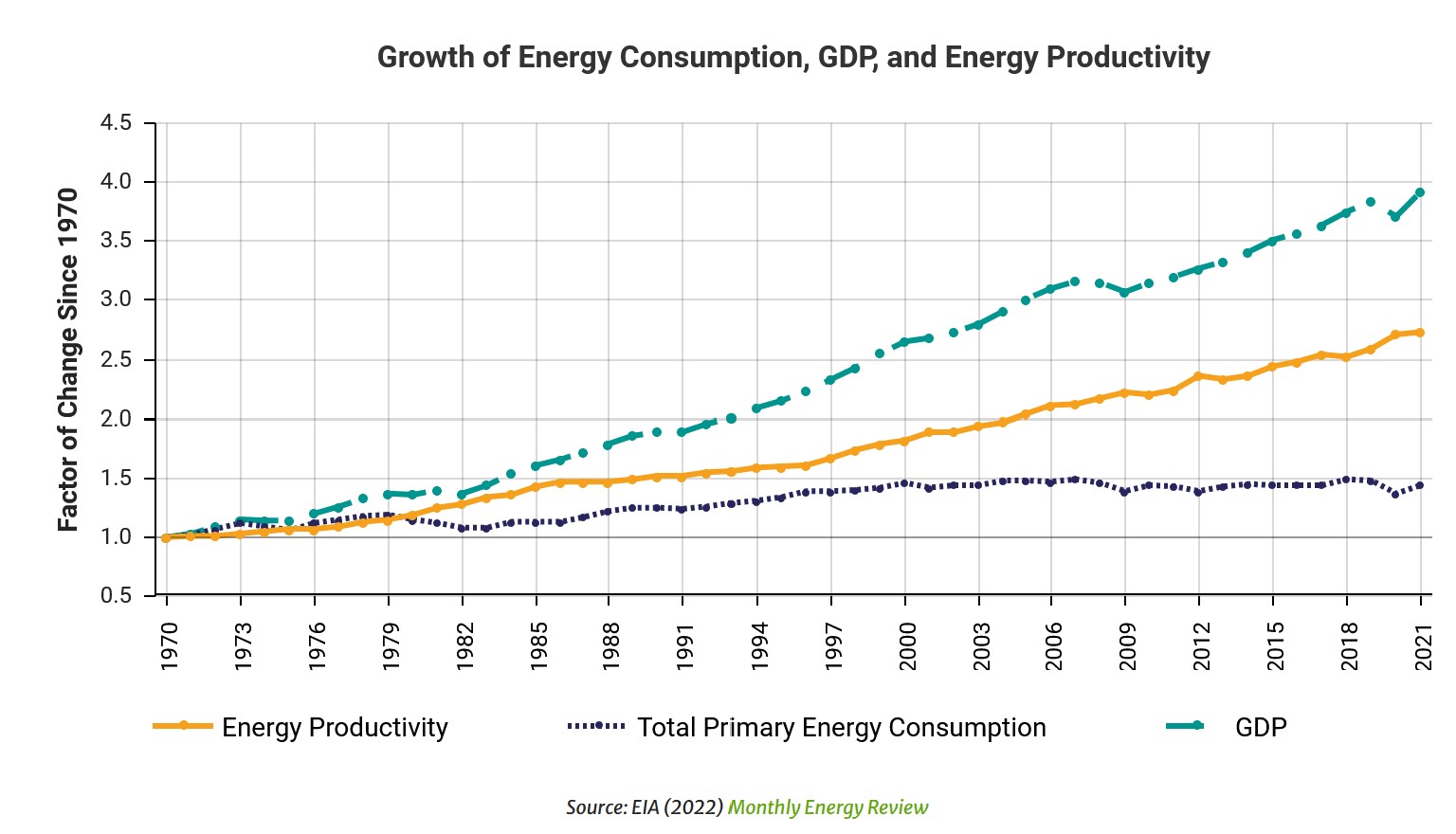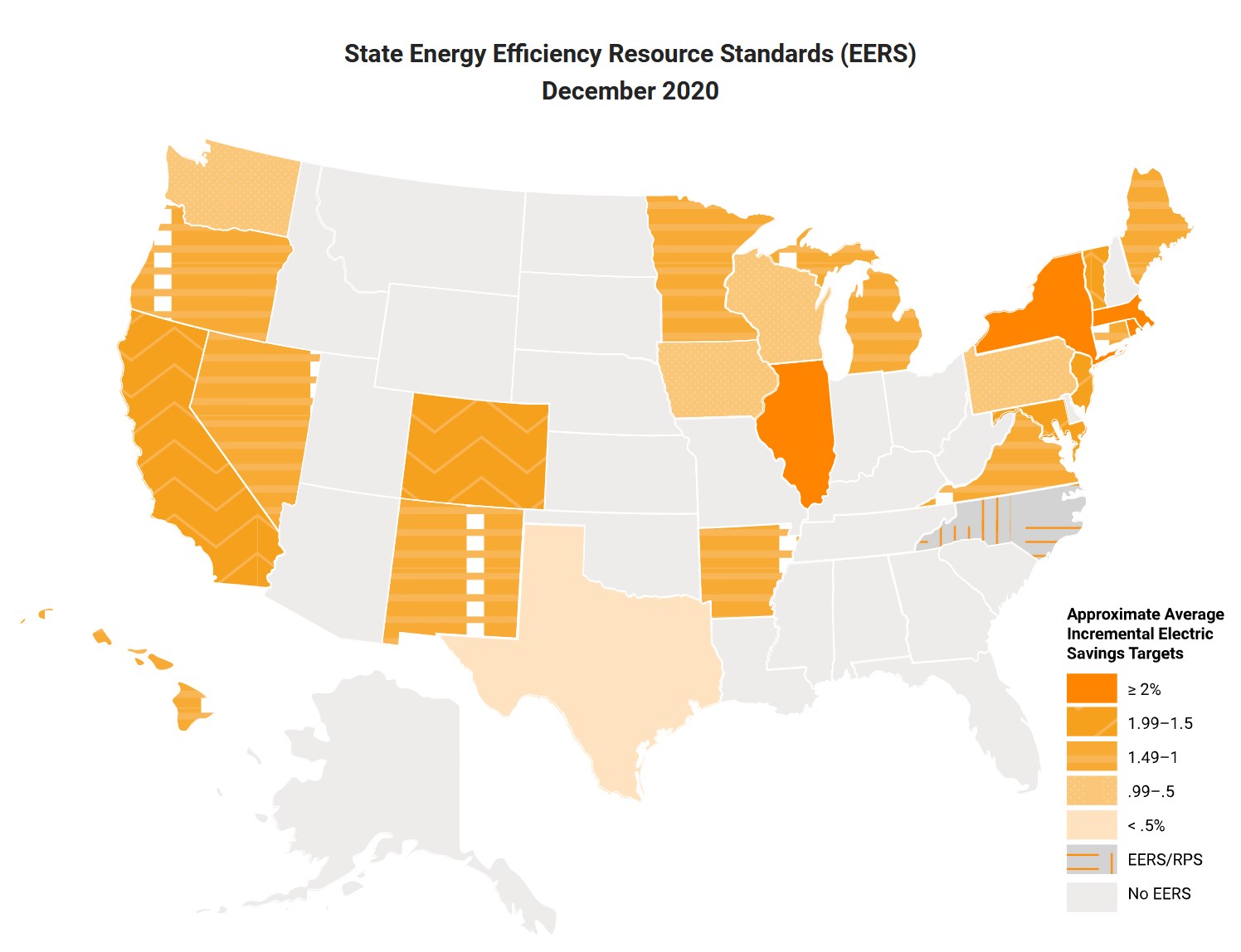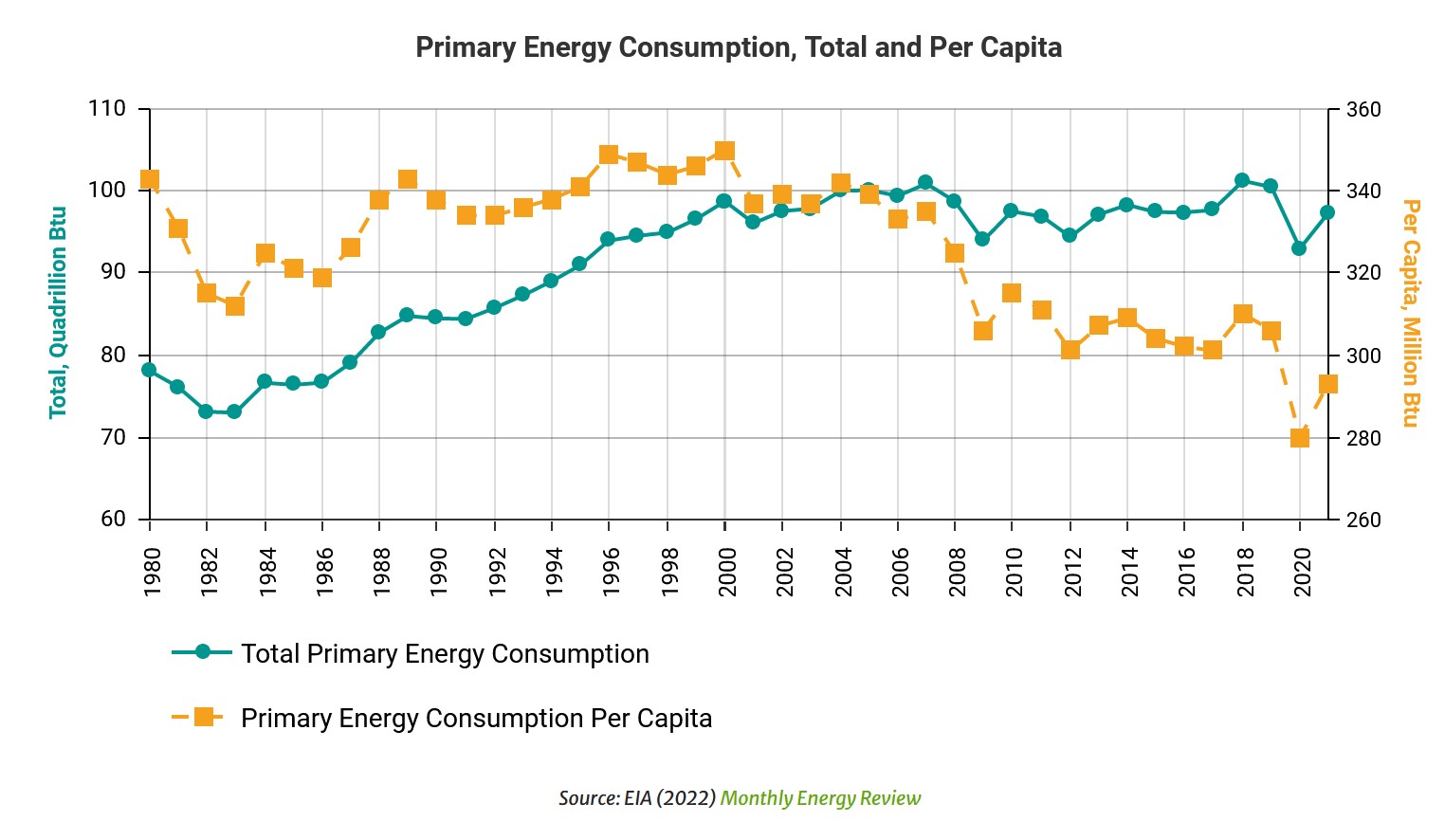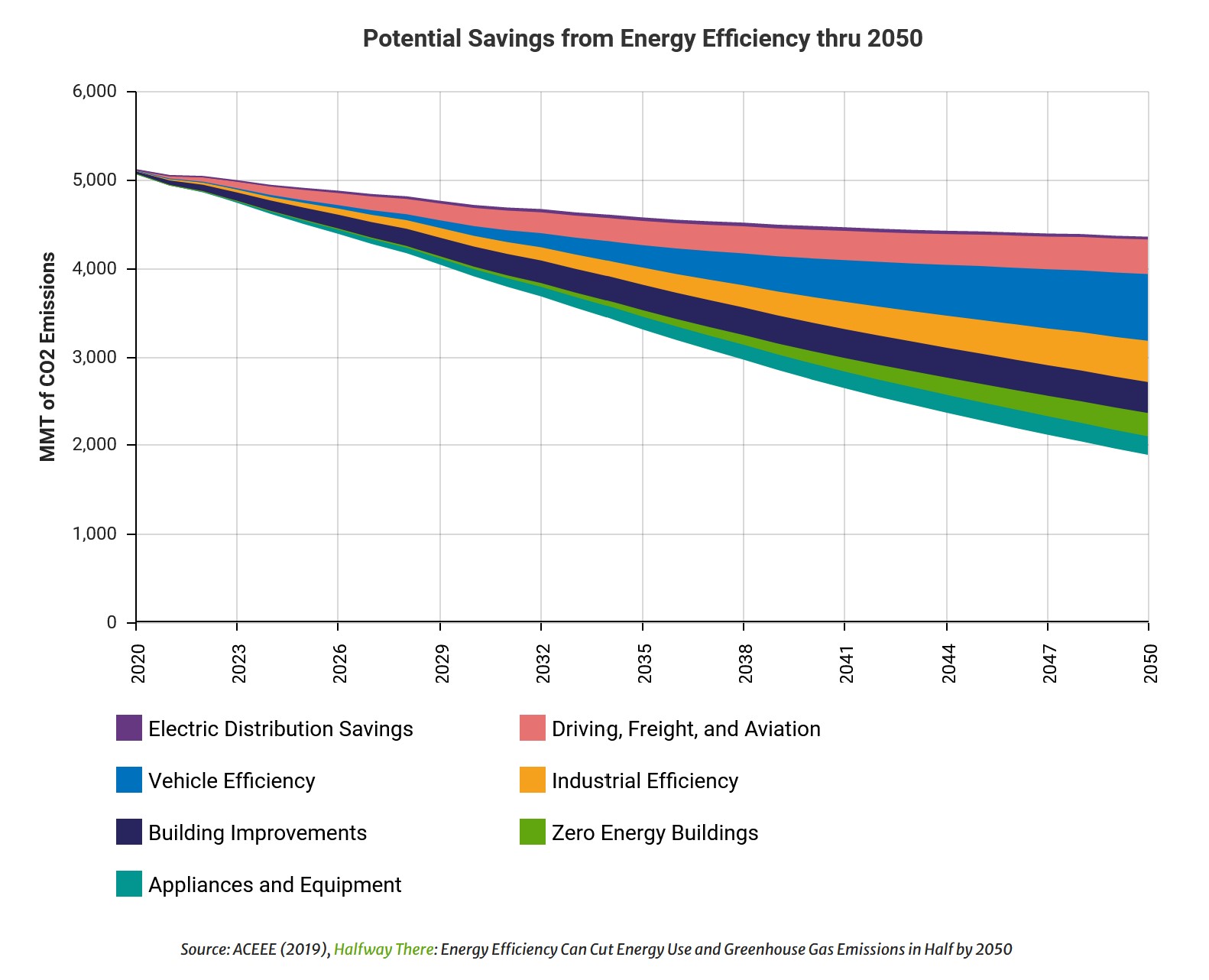By Sam Friedberg, Manager, Research and Analysis, Alliance to Save Energy
This past winter, policymakers were confronted with twin energy crises: preparing communities for winter storms and rising home energy costs while also meeting emissions goals. In situations like these, energy efficiency is a crucial energy solution for strengthening our communities and reducing carbon pollution.
To better quantify the incredible potential of energy efficiency, the Alliance to Save Energy, the Business Council for Sustainable Energy (BCSE), and the American Council for an Energy-Efficient Economy (ACEEE) released the 2023 Energy Efficiency Impact Report, which serves as a “one stop shop” for energy efficiency information. The second edition of the report tracks 59 different energy efficiency indicators, demonstrating how efficiency investments reduce carbon emissions, lower energy bills, and improve public health.
Here are some of the EE Impact Report’s key takeaways that are worth tracking in 2023.
1. Growth in Energy Productivity

Energy efficiency is a driver of economic development. Since 1970, U.S. energy productivity has improved by 170%, driven mostly by improvements in the energy efficiency of homes, buildings, industry, and transportation. As seen above, these trends are continuing into 2023.
From the 1950s to 1970s, the economy and energy consumption grew at similar rates, showing that economic growth and energy consumption were “coupled” with one another. However, by the mid-1990s, U.S. economic growth surged past energy consumption as the United States utilized energy more efficiently.
2. Reduced Energy Consumption

Energy efficiency is a crucial tool for reducing energy consumption – and, with it, carbon emissions. U.S. energy consumption and carbon emissions would be 60% higher without today’s energy efficiency investments. Similarly, in 2021 alone, the United States would have had 78% higher carbon emissions if not for energy efficiency investments.
The EE Impact Report reveals the power of energy efficiency doesn’t stop there. Had U.S. energy productivity remained at the level observed in 1980, U.S. energy consumption would have been more than double its current value.
3. Energy Efficiency Jobs Are Booming

Energy efficiency jobs total over 2.2 million, amounting to a whopping 40% of total energy jobs. More Americans work in energy efficiency than in electric power generation; transmission, distribution, and energy storage; and all fuel energies combined. Efficiency jobs are available nationwide, with workers in 99.8% of U.S. counties.
The energy efficiency industry supports good-paying jobs that bolster local economies. Roughly 11% of energy efficiency workers are covered by a union or project labor agreement, which is nearly twice the rate of the national average. More than 70% of the energy efficiency workforce is also employed by small businesses.
4. The Impact of Energy Efficiency Policy Investment

The EE Impact Report’s data demonstrates that investments in energy efficiency policy are truly effective. For example, states implementing energy efficiency resource standards see 4x energy savings compared to states without such standards.
Another cost-effective policy investment is federal appliance standards. As the efficiency of appliances have increased significantly over the last few decades, federal appliance standards now save the typical household about $500 annually. Estimates suggest federal appliance standards also saved the United States nearly 680 TWh of electricity in 2021 – over 16% of total electricity generated in that year.
The map above shows electricity savings from states that have implemented efficiency standards, with those states shown in orange.
5. Growth in Cost Savings for Consumers

Energy efficiency has led to enormous bill savings across the economy. For example, energy efficiency investments since 1980 led to cost savings of $774 billion dollars in 2020 alone. To put that number in context, if the United States had the same level of economic growth without these savings, energy spending in 2020 would have been 77% higher.
6. Reducing Carbon Emissions

Energy efficiency is a necessary and powerful tool for decarbonization nationwide. According to ACEEE analysis, energy efficiency alone could lead to an incredible 50% emissions reduction by 2050.
If enacted, the policies that would lead to such emissions savings would also provide for more than $700 billion worth of additional savings in 2050 alone.
Head to energyefficiencyimpact.org to dive deep into additional indicators, including insights on efficient transportation, industrial energy intensity, and public health benefits. For more information on energy efficiency in action, check out the report’s case studies and comprehensive backgrounders.
About the author: Sam Friedberg is the Manager of Research and Analysis for the Alliance to Save Energy. The Alliance is a bipartisan, nonprofit coalition of business, government, environmental, and consumer leaders advocating to advance federal energy efficiency policy.

